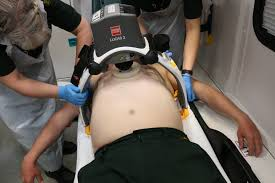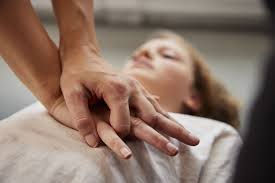
An Introduction to CPR
Cardiopulmonary Resuscitation (CPR) is a life-saving technique performed in situations where a person’s heart or breathing has stopped. The primary goal is to keep blood circulating and oxygen moving to vital organs until professional medical help arrives. CPR can be administered by bystanders with basic training, and it increases the chances of survival for the person experiencing cardiac arrest.

What can I do if I need to perform CPR?
Check whether a person is responsive, then call for help by dialling 999. First, open the airway by tilting the head backwards and lifting the chin to open the airway. If the person is not breathing or is only gasping, start CPR.
What are chest compressions?
Position your hands one on top of the other on the centre of the chest. Use your upper body weight to compress the chest at least two inches or five centimetres deep. Perform chest compressions at a rate of 100 to 120 compressions per minute.

After thirty chest compressions, give two rescue breaths. Ensure a good seal over the person’s mouth and deliver breaths until the chest rises.
For emergency first aid training courses, providers such as www.tidaltraining.co.uk/emergency-first-aid-training-courses offer a full range for clinical professionals or homecare givers as well as groups of people. The Times has an essential CPR guide which gives step-by-step instructions.
Emergency services will take over upon arrival
Continue alternating chest compressions and rescue breaths until the person shows signs of life or professional help arrives. If there is a defibrillator nearby, this can be used on the person. Simply follow the device’s instructions.
While this introduction provides an overview, it’s highly recommended to undergo CPR training to gain practical skills and a deeper understanding of how you could save someone’s life.



Average Rating